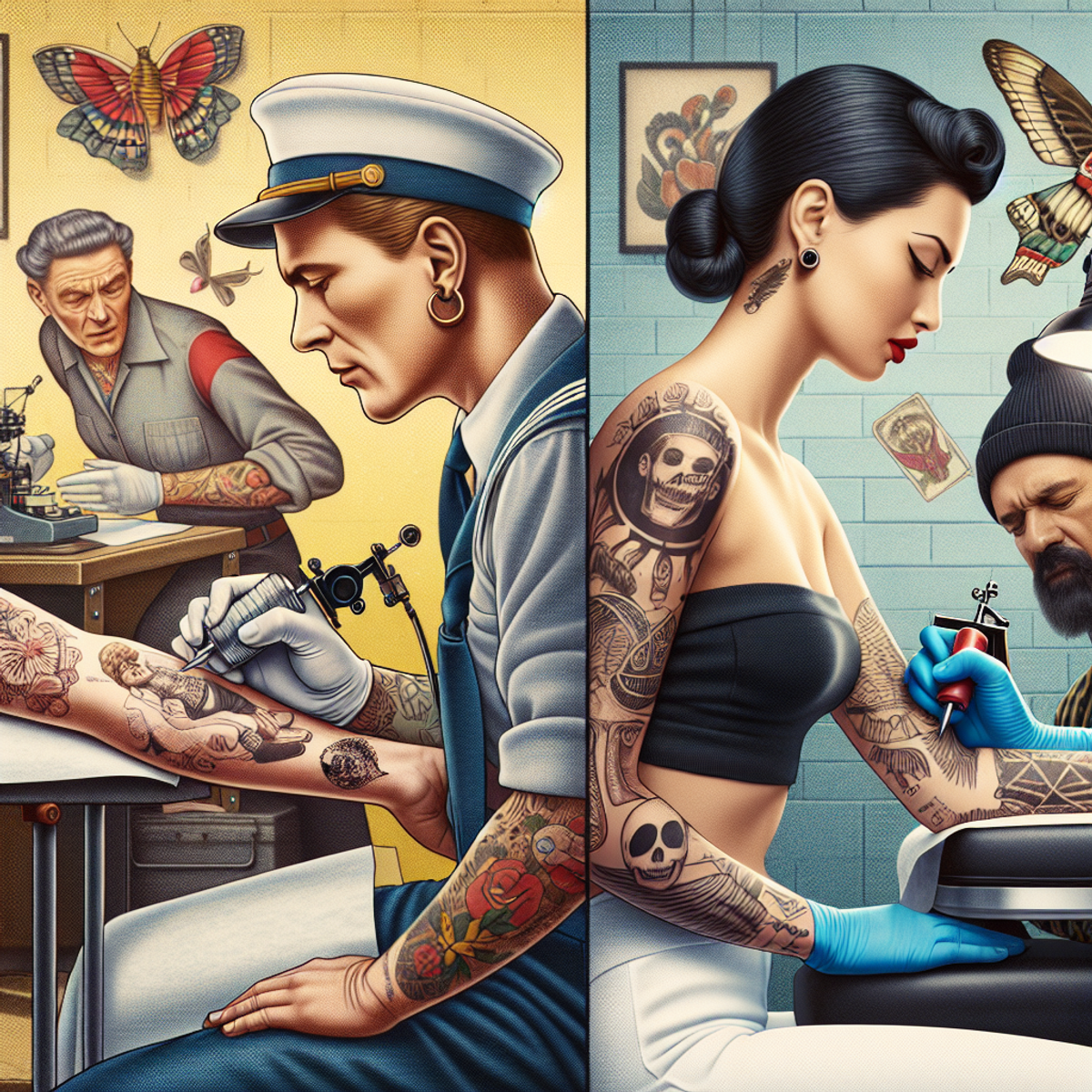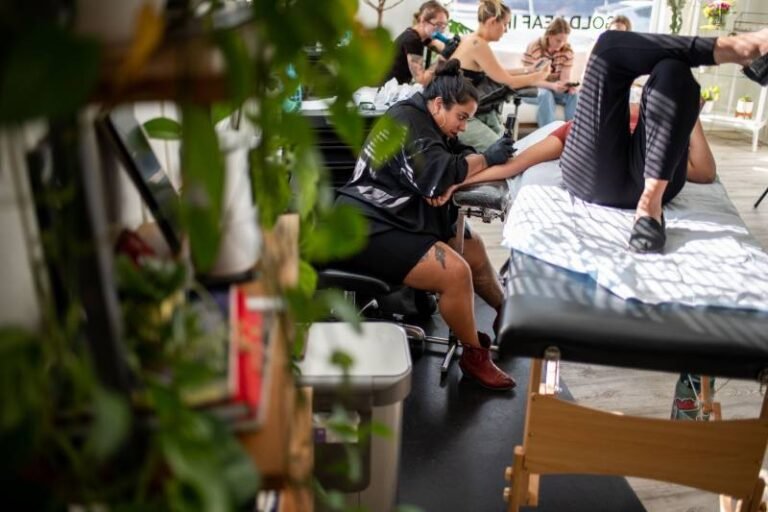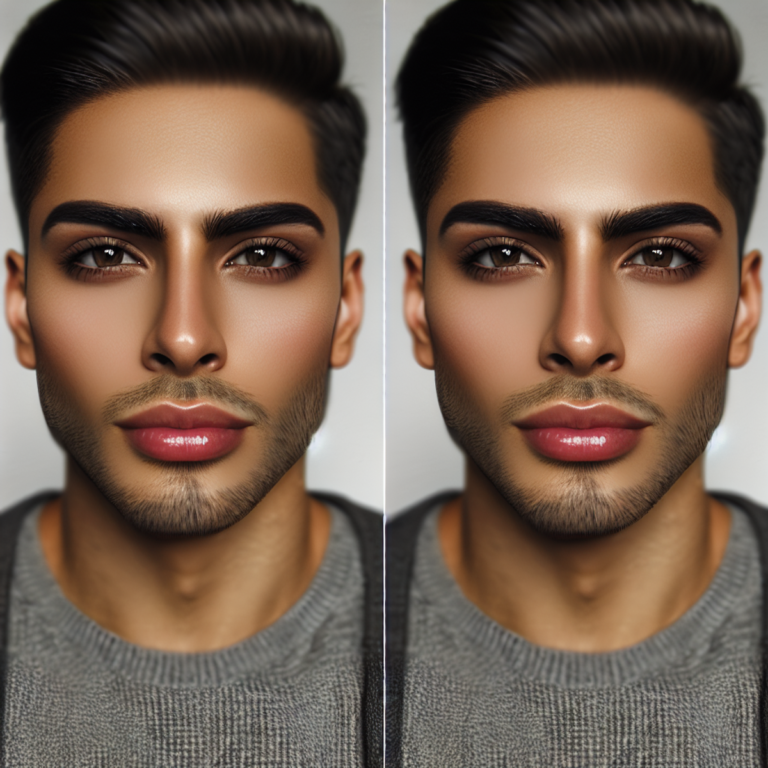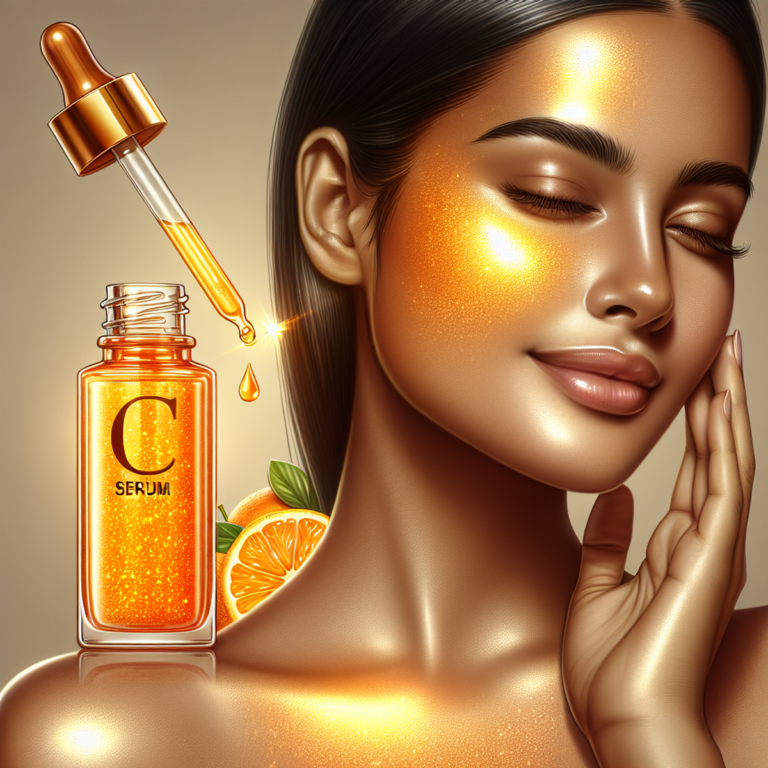How tattoos went from subculture to pop culture

Introduction
Tattoos have changed from being a symbol of counterculture to a defining feature of mainstream pop culture. Subcultures are niche groups within a society that often deviate from the mainstream, while pop culture encompasses popular trends and phenomena. The journey of tattoos from subculture to pop culture reflects a significant societal shift in perceptions and attitudes towards body art.
Over time, tattoos have become a prominent way for people to express themselves, with different meanings attached to them by individuals and communities. In this article, we will explore the historical roots of tattoo counterculture, the key moments that brought tattoos into the mainstream, and how society’s views on body art have evolved. Through this exploration, we hope to gain a deeper understanding of how tattoos have transformed from symbols of rebellion to celebrated forms of personal identity in wider society.
The Historical Roots of Tattoo Counterculture
Tattoos have a long history that goes back thousands of years, with proof of their existence found in ancient civilizations such as Egypt, China, and Polynesia. These early forms of tattooing were often connected to cultural rituals, spiritual beliefs, or social status. However, the perception of tattoos drastically changed when they encountered Western societies over time.
Tattoos and Marginalized Groups
In Western cultures, tattoos were initially looked down upon and associated with disobedience and criminal behavior. During the late 19th and early 20th centuries, tattoos became closely linked to marginalized groups and rebellious movements. For example:
- Sailors: Sailors were known for adorning their bodies with tattoos, which served as reminders of their journeys or symbols of camaraderie among fellow sailors.
- Prisoners: Within prison communities, tattoos served as markers of identity or belonging to specific gangs.
Biker Subcultures and Tattoos
The association between tattoos and counterculture grew even stronger in the mid-20th century with the rise of biker subcultures. Bikers adorned their bodies with tattoos that represented their loyalty to their clubs and embodied the rebellious attitude often associated with motorcycle culture. These tattoos often featured symbols like skulls, eagles, or flames.
It’s worth noting that while tattoos were primarily linked to counterculture movements during this period, there were also individuals who got tattoos for personal reasons unrelated to rebellion or marginalization. Nevertheless, society as a whole viewed tattoos as signs of defiance and disapproved of those who had them.
“Tattoos are like stories – they’re symbolic of the important moments in your life.” – Pamela Anderson
Shifting Attitudes towards Tattoos
The historical pattern of stigmatizing tattoos began to change in the second half of the 20th century as societal attitudes became more inclusive. This shift was influenced by various factors, including:
- Changing cultural norms: As society became more open to different forms of self-expression, tattoos started to be seen as a valid way for individuals to showcase their identities.
- Celebrity influence: The growing presence of celebrities with tattoos in the media played a significant role in normalizing body art. When famous figures publicly displayed their tattoos, it challenged the negative stereotypes associated with them.
By understanding the background of tattoos and their association with counterculture, we can better grasp the significance of their journey towards widespread acceptance and integration into mainstream culture.
In the next section, we will explore significant moments in the evolution of tattoos, including the impact of influential individuals in popularizing body art during different time periods.
Tattoos Break into the Mainstream: Key Turning Points
The journey of tattoos from subculture to pop culture has been marked by several key turning points that have contributed to their shift into mainstream culture. These significant moments and eras have played a crucial role in shaping the acceptance and popularity of tattoos in society. Additionally, influential figures such as celebrities, musicians, athletes, and tattoo artists have played a pivotal role in popularizing tattoos during these periods.
1. Counterculture Movement (1960s-1970s)
One of the key turning points in the mainstreaming of tattoos can be traced back to the 1960s and 1970s, when the counterculture movement gained momentum. During this time, tattoos became associated with rebellion and non-conformity, making them attractive to those seeking to challenge societal norms. The counterculture movement included elements like peace signs, flower power, and psychedelic designs, which were often incorporated into tattoo art (source).
2. Influence of Musicians and Athletes (1990s)
Another significant moment came in the 1990s when tattoos began to gain traction among musicians and athletes. This period saw an increase in prominent figures showcasing their inked bodies, which helped normalize tattoos in popular culture. Musicians like Lenny Kravitz and Red Hot Chili Peppers’ Anthony Kiedis proudly displayed their tattoos both on stage and off, making them more socially acceptable (source).
3. Rise of Celebrity Tattoo Culture (2000s)
The early 2000s witnessed a surge in celebrity tattoo trends, further propelling tattoos into the mainstream. Pop icons like Angelina Jolie, David Beckham, and Rihanna became known for their extensive tattoo collections, inspiring fans worldwide to embrace body art as a form of self-expression. These celebrities not only made tattoos fashionable but also brought attention to unique designs and artistic styles (source).
4. Impact of Social Media (Present)
In recent years, social media has played a significant role in amplifying the acceptance of tattoos. Platforms like Instagram have allowed tattoo enthusiasts to share their inked creations with a global audience, creating communities and fostering inspiration. Tattoo artists now use social media to showcase their work, attracting clients from all walks of life who may have never considered getting a tattoo before.
The influence of influential figures extends beyond celebrities. Tattoo artists themselves have become key players in bringing tattoos into the mainstream. Artists like Kat Von D and Ami James gained fame through reality TV shows like “Miami Ink” and “LA Ink,” respectively, showcasing their talent and bringing tattoo artistry to a wider audience.
Through these key turning points and the influence of influential figures, tattoos have successfully broken into mainstream culture. From counterculture movements to celebrity endorsements and the power of social media, tattoos have become more accepted and celebrated.
The Celebrity Factor: Normalizing Body Art through Famous Inked Individuals
Celebrities have played a crucial role in making tattoos more popular and accepted, setting trends, and shaping people’s views on body art. When we look at how celebrities influence the way people see tattoos and the kinds of designs they choose, we can see just how much impact famous tattooed individuals have on our culture.
Setting Trends with Their Tattoos
Celebrities are often seen as trendsetters, influencing what people find attractive or fashionable. When they get tattoos with unique designs, it can quickly change how the general public feels about body art. For example, when well-known figures like Angelina Jolie, David Beckham, or Rihanna show off their detailed tattoos, it not only makes people admire them but also inspires fans and enthusiasts to get similar ones.
Examples of Tattoos Worn by Celebrities
- David Beckham: Known for having many tattoos all over his body, Beckham has gotten a lot of attention for his ink. His meaningful tattoos, which include religious symbols and tributes to his family, have helped make the idea of tattoos as personal expressions more accepted.
- Rihanna: A major figure in both music and fashion, Rihanna’s unique tattoos have definitely had an impact on mainstream culture. Her groundbreaking approach to body art, such as getting tattoos on her hands and fingers, has challenged traditional ideas about where tattoos should go and what they should look like.
- Megan Fox: The actress’ prominent tattoos have been influential in changing how people think about women with tattoos. Her bold and diverse collection of tattoos has played a part in breaking down old-fashioned gender stereotypes associated with body art.
How Celebrities Have Shaped Our Views on Tattoos
These examples of famous people with tattoos show us just how much influence they have in shaping what society thinks about body art:
- They’ve made tattoos less taboo: By proudly showing off their tattoos, these celebrities have helped make them seem less rebellious or unconventional.
- They’ve shown tattoos as personal expressions: Through their own meaningful tattoos, famous individuals have encouraged others to see body art as a way of expressing themselves.
- They’ve expanded the idea of what’s attractive: With their unique and unconventional tattoo choices, celebrities have broadened our understanding of what can be considered beautiful or appealing. For instance, the beautiful and unique body art worn by many celebrities has significantly influenced mainstream culture’s perception of tattoos.
By looking at these iconic celebrity tattoos and how they’ve affected our culture, we can better understand the important role that influential people play in making tattoos more accepted and changing how we view them.
The fact that celebrities often endorse tattoo artists and styles shows just how much power they have in influencing what people think is cool or desirable when it comes to tattoos. This is evident in the diverse range of celebrity tattoo meanings that inspire people to get inked with personal significance.
Social Media’s Amplification Effect: How Digital Platforms Propelled the Acceptance of Tattoos
In today’s digital age, social media has played a significant role in propelling the acceptance of tattoos and transforming them from a subculture to pop culture phenomenon. The influence of social media platforms like Instagram, Facebook, and Pinterest cannot be underestimated when it comes to disseminating tattoo imagery and fostering community building among enthusiasts.
1. Disseminating Tattoo Imagery
Social media has provided a powerful platform for tattoo artists and enthusiasts to showcase their work and reach a wider audience. The ability to easily share high-quality images of tattoos has allowed for the rapid spread of new designs, styles, and trends. Artists can now connect with potential clients from all over the world, breaking down geographical barriers and expanding their reach.
The visual nature of social media platforms makes them ideal for showcasing tattoo artistry. Artists can create visually appealing profiles that serve as online portfolios, allowing potential clients to browse through their work and get a sense of their style and skill. This accessibility has made it easier than ever for individuals to find artists who align with their aesthetic preferences.
2. Facilitating Community Building
Social media has also created a sense of community among tattoo enthusiasts. Hashtags like #tattooaddict, #inkedlife, and #tattoocommunity have become virtual meeting places where people can share their love for tattoos, discuss designs and techniques, and support one another. Online communities centered around tattoos provide a space for individuals to connect with like-minded people, regardless of their physical location.
Platforms like Facebook groups and Reddit threads offer forums for in-depth discussions about all things related to tattoos. These communities allow individuals to seek advice, share experiences, and find inspiration. They create a sense of belonging and validation for individuals who may have felt marginalized or misunderstood in offline spaces.
Positive Effects of Visibility on Social Media
The visibility afforded by social media has had various positive effects on individuals with tattoos:
- Normalization: The widespread presence of tattoos on social media has contributed to their normalization in society. As more people share their tattoo experiences and stories, it becomes increasingly accepted as a form of self-expression.
- Inspiration: Social media platforms have become a treasure trove of inspiration for individuals considering getting a tattoo. They can explore different styles, designs, and placements to help them make informed decisions about their own tattoos.
- Empowerment: Social media has given individuals with tattoos a platform to share their stories and challenge stereotypes. It allows them to reclaim their bodies and defy societal expectations, encouraging self-acceptance and empowerment.
Negative Effects of Visibility on Social Media
While social media has undoubtedly had a positive impact on the acceptance of tattoos, there are also negative aspects to consider:
- Copying and Trendiness: The ease of sharing tattoo images has led to an increase in copying and trendiness. Some individuals may choose tattoos solely based on what is popular on social media, leading to a lack of originality and personal meaning.
- Misrepresentation: Social media can create unrealistic expectations about the tattoo experience. Highly edited and curated images may not accurately reflect the pain, healing process, or long-term maintenance required for certain tattoos.
- Judgment and Criticism: Despite the growing acceptance of tattoos, there are still pockets of society that stigmatize or judge those with visible body art. Social media can amplify these negative opinions and lead to cyberbullying or online harassment.
Social media has had a profound impact on the acceptance of tattoos in mainstream culture. It has provided a platform for disseminating tattoo imagery, fostering community building among enthusiasts, and normalizing body art as a form of self-expression. While there are both positive and negative effects of visibility on social media for individuals with tattoos, its overall influence has been instrumental in the journey of tattoos from subculture to pop culture.
From Taboo to Tasteful: Changing Perceptions of Tattoos in Society
The shift of tattoos from subculture to pop culture is closely tied to the changing perceptions and attitudes towards body art in society. What was once considered taboo and associated with marginalized groups has now become widely accepted and even celebrated. In this section, we will examine the shifting societal attitudes towards tattoos as they moved from subculture to pop culture, and consider the factors that contributed to the increased acceptance of tattoos in professional settings.
Shifting Societal Attitudes
Over the years, there has been a noticeable shift in how tattoos are perceived by society. Studies and surveys have consistently shown a growing acceptance and appreciation for body art. According to a 2019 survey conducted by the American Academy of Dermatology, 30% of Americans aged 18-29 have at least one tattoo. This statistic reflects a significant increase compared to previous generations, indicating a generational shift in attitudes towards tattoos.
One possible explanation for this change is the influence of popular culture. As tattoos became more prevalent among celebrities and public figures, they started to be seen as a form of self-expression and art rather than a symbol of rebellion or deviance. Celebrities like Angelina Jolie, David Beckham, and Rihanna have proudly displayed their extensive tattoo collections, contributing to the normalization of body art.
Factors Contributing to Acceptance
Several factors have contributed to the increased acceptance of tattoos in professional settings:
- Changing work environments: As industries become more creative and progressive, there is a greater emphasis on individuality and self-expression. Tattoos are no longer seen as barriers to professionalism but rather as personal narratives that add depth and character.
- Diversity and inclusivity movements: These have played a role in challenging conventional beauty standards and promoting acceptance of all forms of self-expression. As society becomes more diverse and aware of different cultural practices, tattoos are recognized as an important part of cultural heritage and identity.
- Tattooed professionals in influential positions: Doctors, lawyers, teachers, and other professionals with visible tattoos challenge stereotypes and break down barriers. Their success and competence demonstrate that tattoos do not hinder one’s ability to excel in their chosen field.
Embracing Personal Expression
The shift from subculture to pop culture has given individuals the freedom to embrace tattoos as a means of personal expression. Tattoos are no longer seen as a mark of rebellion but rather as a reflection of one’s beliefs, values, and experiences. They provide a way for individuals to reclaim their bodies and establish a sense of belonging in an ever-changing world.
The changing perceptions and attitudes towards tattoos have played a significant role in their journey from subculture to pop culture. As society becomes more accepting and inclusive, tattoos are recognized as valid forms of self-expression and art. The influence of popular culture, changing work environments, diversity movements, and the success of tattooed professionals have all contributed to this cultural shift. Tattoos are now celebrated as personal narratives that add depth and character to individuals’ lives.
Regretting the Ink: The Flipside of Tattoo Trendiness and the Boom in Removal Services
The increasing popularity of tattoos in mainstream culture has not come without its consequences. As tattoos have become more accepted and prevalent, a phenomenon known as “tattoo regret” has emerged. This refers to the feeling of remorse or dissatisfaction that some individuals experience after getting a tattoo. Here, we will explore the flipside of tattoo trendiness and the boom in removal services.
Discussing Tattoo Regret in the Context of Mainstream Popularity
With tattoos becoming more common and accessible, it’s no surprise that some people may experience regret after getting inked. The reasons for tattoo regret can vary from person to person, but there are several factors that contribute to this phenomenon:
- Changing personal preferences: People’s tastes and preferences evolve over time. What might have seemed like a great idea at one point may no longer align with an individual’s current style or identity.
- Career considerations: The increased visibility of tattoos in professional settings has led some individuals to rethink their ink. In certain industries or job markets, visible tattoos can still carry a stigma or be seen as unprofessional, leading people to seek tattoo removal for better job prospects.
- Relationship changes: Tattoos that were once meaningful as a symbol of love or friendship can become reminders of past relationships that have ended. In these cases, people may choose to remove the tattoo as a way of moving on and starting fresh.
- Poorly executed tattoos: Not all tattoos turn out as expected. Whether due to inexperienced artists, miscommunication, or changes in the body over time, some individuals may be unhappy with the quality or appearance of their tattoo and seek removal.
Exploring Reasons for Tattoo Removal
The demand for tattoo removal services has surged alongside the popularity of tattoos themselves. People seek tattoo removal for a variety of reasons:
- Career advancement: As mentioned earlier, job prospects can be a major driving factor for tattoo removal. In certain professions, visible tattoos may limit opportunities for advancement or even employment. Removing tattoos can help individuals conform to professional standards and increase their chances of success.
- Personal transformation: Individuals may seek tattoo removal as part of their personal growth journey. They view the removal process as a way to shed old identities or beliefs that no longer resonate with who they are today.
- Regret and dissatisfaction: Some people simply regret getting a particular tattoo and want it completely removed from their body. This could be due to changes in personal taste, negative associations, or simply not liking the design anymore.
- Cover-up options: Tattoo removal is not always about complete eradication. In some cases, people seek removal to make space for new tattoos or cover up existing ones with more desirable designs.
It’s important to note that tattoo removal procedures have advanced significantly in recent years, making the process more effective and less painful than before. Laser tattoo removal is now the most common method used, breaking down ink particles with high-intensity laser beams.
The rise in demand for tattoo removal services highlights the complex relationship between tattoos and personal identity. While tattoos can be a form of self-expression and empowerment, they are also subject to changing tastes, life circumstances, and societal expectations.
Evolving Artistic Practices: Innovation and Adaptation in the Tattoo Industry
The growing popularity of tattoos has had a big impact on how artists create tattoos. As tattoos have become more mainstream, artists have changed their techniques and styles to meet the needs of their clients. In this article, we will look at how tattoos becoming popular has affected the way artists work.
How Tattoos Becoming Popular Has Changed How Artists Work
The rise of tattoos in popular culture has pushed artists to try new things and come up with new styles. With more and more people getting tattoos, artists have been able to try out different ideas. Some ways in which artistic practices have changed include:
1. Fine Art Influence
Many tattoo artists have started using ideas from traditional fine art in their work, making it hard to tell the difference between a tattoo and a painting or sculpture. This has led to very detailed designs that show off how skilled and creative the artist is.
2. Realism and Portraits
The fact that tattoos are more accepted now means that artists can focus on making tattoos that look like real photos or images. Better tattoo machines and ink have made it easier for artists to make these kinds of tattoos, resulting in ones that look incredibly lifelike.
3. Watercolor Tattoos
Another new style that has become popular because of tattoos being more accepted is watercolor tattoos. These designs use bright colors and look like paintings done with watercolors, giving them a unique and expressive appearance.
How Tattoos Becoming Popular Has Affected Artists’ Business
The fact that tattoos are now mainstream has not only changed how artists work but also how they make money. While there are both good and bad things about this, one thing is clear: more people want tattoos now that they are seen as normal.
1. More People Want Tattoos
With tattoos being more accepted, there are now a lot more people who want to get tattoos. This has created a huge demand for talented tattoo artists, leading to more opportunities for them to show off their skills and have successful careers.
2. Artists Can Make More Money
Because there is such a big demand for tattoos now, artists who are really good at what they do can charge more money for their work. This means that they can make a good living doing something they love.
3. More Competition and the Need for Quality
However, because tattoos are so popular now, there are also a lot more artists trying to get into the industry. This means that established artists have to work even harder to stand out from the crowd and make sure that their work is always top-notch.
The fact that tattoos have become mainstream has not only changed what people think about them but also how artists create them. Artists have embraced this change by trying out new things and coming up with new styles, making tattoos an ever-changing art form. The effect on tattoo artists and studios has been big, with more people wanting tattoos and artists being able to make more money. As tattoos continue to gain acceptance in pop culture, it will be interesting to see how artists in the industry keep changing and finding new ways to make sure that their work stays fresh and exciting.
Embracing a Permanent Identity: Tattoos as Personal Narratives in a Transient World
Tattoos have become a timeless form of self-expression, serving as enduring symbols of individuality in an increasingly ephemeral society. As societal norms and personal identities continue to evolve, tattoos offer a means for individuals to reclaim their bodies and establish a sense of belonging.
Enduring Appeal in a Transient World
In today’s fast-paced and ever-changing world, the permanence of tattoos stands in stark contrast to the transient nature of many modern experiences. Unlike fleeting trends or temporary fads, tattoos carry a lasting significance, providing a tangible representation of an individual’s beliefs, values, and life experiences. In this way, they serve as enduring testaments to personal identity amidst societal flux.
Reclaiming Bodies and Establishing Belonging
For many individuals, getting tattooed is an intentional act of self-empowerment and self-definition. In a world where external pressures often dictate standards of beauty and conformity, tattoos allow people to take ownership of their physical appearance, reclaiming agency over their bodies. By choosing designs that hold personal meaning or cultural significance, individuals forge connections with their heritage or experiences, creating a profound sense of belonging.
Conveying Personal Narratives
Tattoos serve as visual narratives that encapsulate an individual’s journey through life. Each piece of ink represents a chapter in one’s personal story, capturing moments of joy, triumph, loss, or resilience. Whether through intricate designs or meaningful symbols, tattoos provide a medium for individuals to communicate their unique narratives to the world without uttering a single word.
The enduring allure of tattoos lies in their ability to transcend fleeting trends and societal pressures, offering individuals an everlasting canvas for self-expression and self-assertion. As we navigate an era characterized by rapid change and impermanence, tattoos stand as permanent manifestations of personal narratives in an otherwise transient world. Through these indelible marks, individuals continue to embrace their identities with unwavering permanence and pride.
Looking Ahead: The Future Trajectory of Tattoo Culture
As tattoos continue to gain acceptance and popularity in mainstream society, it is intriguing to consider the future trajectory of tattoo culture. Here are some insights into the potential directions that tattoo culture may take and its relationship with both subculture and mainstream society:
1. Innovation in Tattoo Technology
With advancements in technology, we can expect to see innovations in tattooing techniques and tools. This could include the development of new ink formulas, improved tattoo machines, and even the use of advanced techniques like 3D printing for tattoos.
2. Diversification of Tattoo Styles
As more people embrace tattoos, there will likely be a greater demand for unique and personalized designs. This could lead to a diversification of tattoo styles, with artists exploring new aesthetics, cultural influences, and artistic techniques.
3. Integration of Augmented Reality
The integration of augmented reality (AR) technology with tattoos opens up exciting possibilities for interactive and dynamic body art. Imagine tattoos that come to life through AR applications or react to changes in the environment.
4. Tattoos as a Form of Biometric Identification
In an increasingly digital world, there is a growing interest in biometric identification methods. Tattoos could potentially serve as a unique form of identification, offering a more permanent and personal alternative to traditional methods like fingerprints or facial recognition.
5. Greater Emphasis on Sustainability
As environmental awareness increases, the tattoo industry may also evolve towards more sustainable practices. This could involve using eco-friendly inks, reducing waste in the tattoo process, or even exploring biodegradable tattoo materials.
6. Continued Influence of Subcultures
While tattoos have become mainstream, their roots in subculture will always be significant. Subcultures like punk, goth, and street culture will likely continue to inspire new trends and push boundaries in tattoo artistry.
7. Changing Attitudes and Societal Perceptions
As tattoo culture evolves, societal perceptions of tattoos may continue to shift. Tattoos could become even more accepted in professional settings, challenging traditional norms and encouraging individual expression.
It is important to note that the future of tattoo culture is fluid and subject to change. These insights are merely possibilities based on current trends and emerging technologies. The journey of tattoos from subculture to pop culture is an ongoing narrative, and it will be fascinating to see how it continues to unfold in the years to come.
Conclusion
The journey of tattoos from subculture to pop culture is a reflection of the ever-changing societal attitudes and the power of mainstream narratives. This cultural shift signifies a significant transformation in the perception of body art, from being stigmatized and associated with marginalized groups to being embraced as a form of self-expression and art.
The increasing popularity of tattoos, influenced by celebrities, social media, and shifting societal norms, has reshaped the tattoo industry and challenged traditional perceptions.
Tattoos have evolved from being symbols of rebellion and non-conformity to becoming mainstream expressions of personal narratives and identity. This transition underscores the dynamic nature of cultural trends and the impact of influential figures and digital platforms in shaping collective perspectives.
As tattoos continue to permeate various facets of society, it’s crucial to recognize their cultural significance and the diverse meanings they hold for individuals. The acceptance of tattoos in mainstream culture represents a broader shift in societal values and aesthetics, emphasizing the importance of embracing diversity and individuality.
In conclusion, the journey of tattoos from subculture to pop culture is emblematic of the fluidity of cultural dynamics and serves as a testament to the transformative power of art in challenging conventions and shaping contemporary identities.










